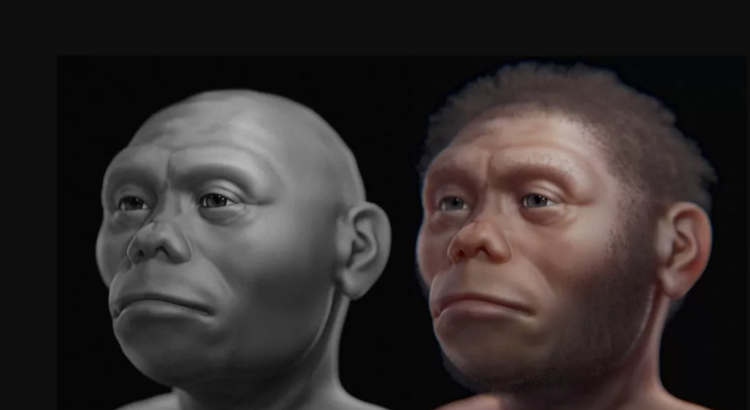A 3D reconstruction reveals the face of the "hobbit", a potential parent of humans

Its discovery in 2003, in a cave in Indonesia, had given rise to one of the lively contemporary debates in the community of paleoanthropologists. It was then a question of knowing if we had just discovered a new species of hominid (baptized Homo floresiensis) or if we were in the presence of an individual (female) belonging to the Homo sapiens group, but presenting characteristics of microcephaly.
While this scientific debate remains open, a team consisting of two Italian archaeologists and a Brazilian 3D designer ( designer ) has modeled a facial approximation of Homo floresiensis , as it looked around 18,000 years ago.
An overview of Homo floresiensis
The results of the Italian-Brazilian team's research are based on the skull of Homo floresiensis, which is almost complete, apart from small parts in the region of the glabella (the part of the forehead directly between the eyebrows) and of the nasal bone. They were able to reconstruct these parts using “anatomical deformation”.
Human floresiensis – 3D facial approximation, Crédit : Cícero Moraes
To do this, the 3D designer, Cicero Moraes and his colleagues relied on skulls of male Homo sapiens and scans of a chimpanzee skull (Pan troglodytes) which they deformed using 3D techniques. In particular, they mobilized the know-how of forensic facial reconstruction or forensic facial approximation, which makes it possible to reconstruct an individual's face from his skull, especially when the information available for his identification is limited.
Two final models
The simulations yielded two final facial approximations.
The first is a neutral, black and white image of an ape-like individual with a broad nose, and the second is a more stylized version with facial hair. The bearers of this independent study, therefore attached to no institution, hope to contribute to the debate on Homo floresiensis and its membership.

“ Homo floresiensis probably had a less protruding nose than modern humans, the mouth region was somewhat more projecting than ours, and the brain volume was significantly smaller. […] The final appearance surprised us a lot, because looking at the face we can see a series of compatibilities with modern men, but not enough to consider it part of the group. explains Cicero Moraes to LiveScience .
Source: websites

